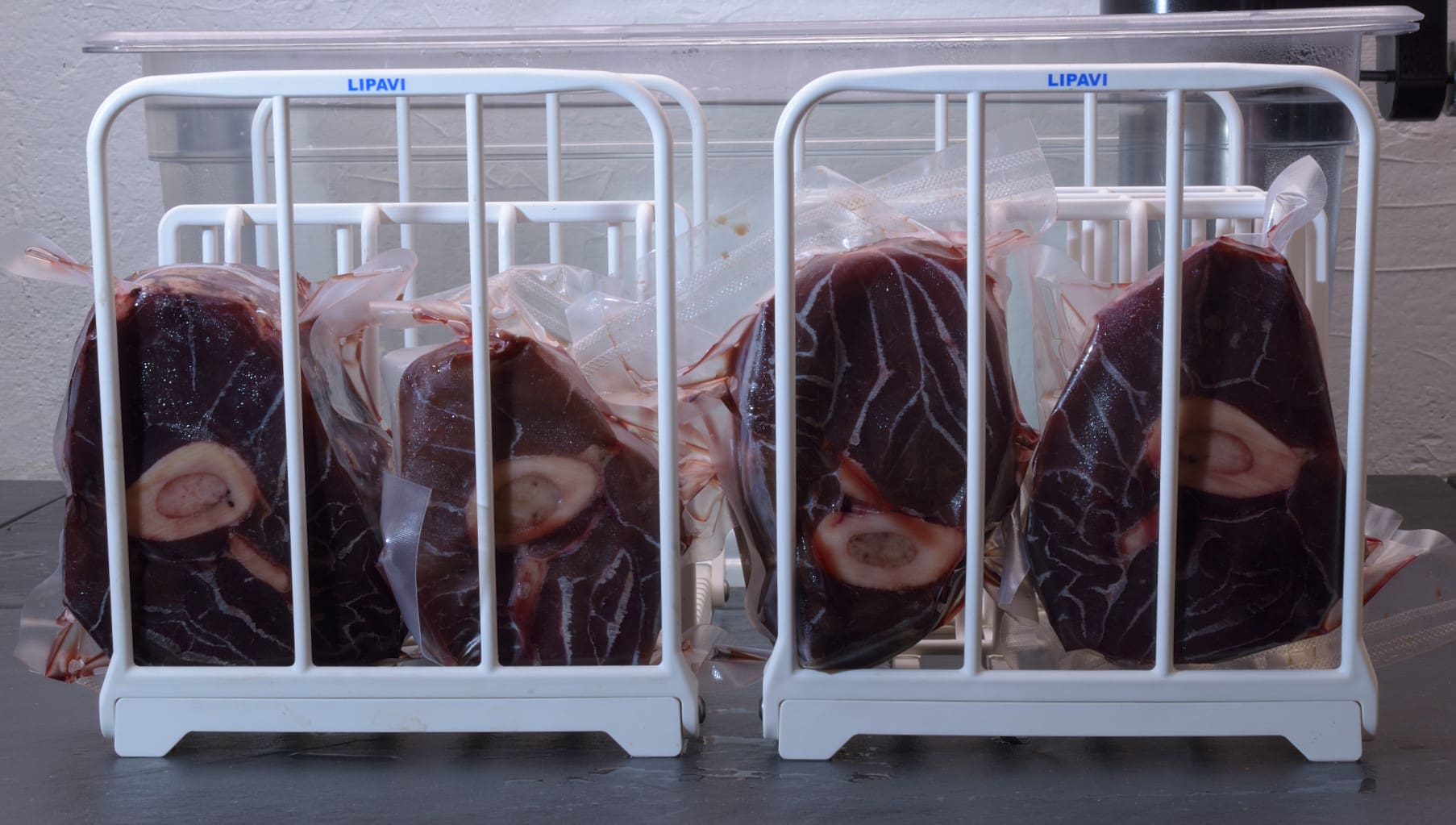
Lipavi N15 polycarbonate racks–super convenient, durable, rust free.
Serves 1-4
Level of difficulty 3.0
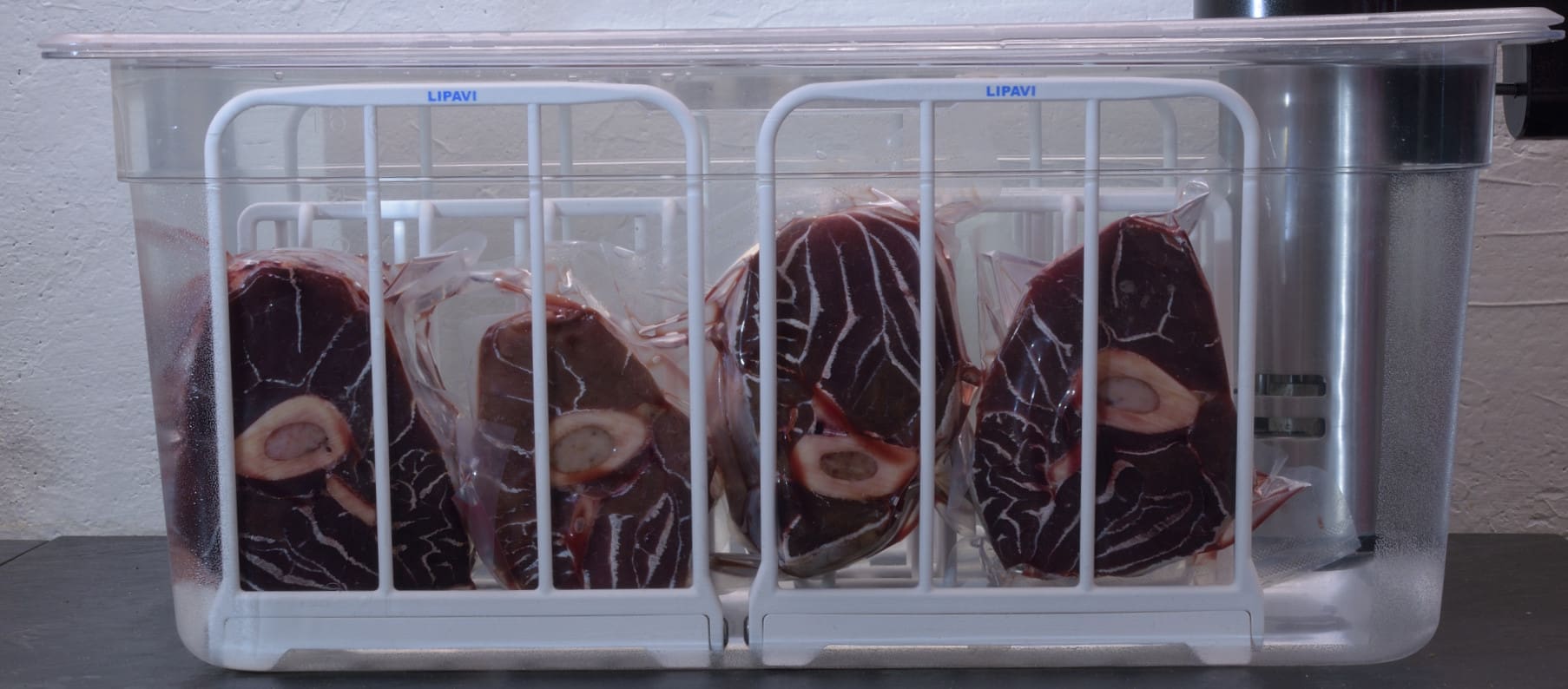
Above: Lipavi C15 container, N15 polycarbonate racks. Lipavi C15L lid.
Procedure:
Preheat your sous vide bath to 140 F/60 C.
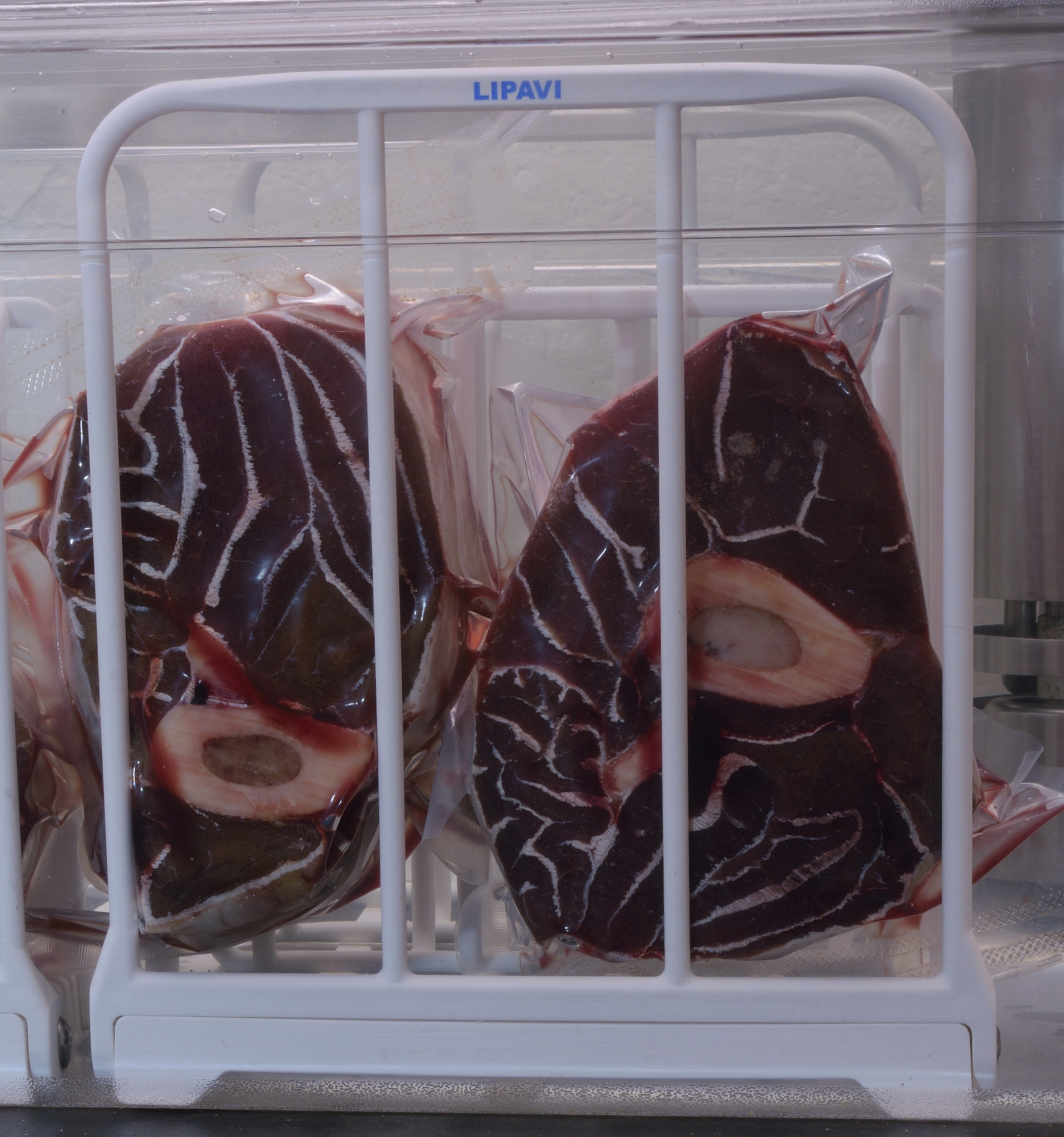
Vacuum seal the individual elk shanks in heat rated plastic bags. Sous vide process the packages for 60 hours.
When the interval has elapsed, either proceed to making the sauce OR conserve the shanks for future use. If your plan is to postpone service until a later date, safe handling procedures require the sealed packages be shocked in iced water until they achieve 70 F/21 C and then refrigerated at 40 F/4 C. The sealed elk shanks can be safely refrigerated for at least two weeks. On the day of service, reheat in a 140 F/60 C sous vide bath for a minimum of two hours.
Clarifying the juices to make Sous-Jus:
Set your oven on the warming function or as low as possible–170 F-190 F/77 C-88 C is ideal, but even 225 F/107 C is not too hot.
Cut a hole in the plastic pouch(es) and drain the juices into a microwaveable container or small sauce pan.
Remove the shank(s) from the bag and single layer in a casserole dish–avoid stacking the shanks. Bring the juices just to a boil either in the microwave or in the sauce pan. Line the strainer with a moistened paper towel. If you do not moisten the towel it will absorb the clarified juices rather than drain them into the container below.
Pour the hot juices through the moistened paper towel into a container.
Discard the debris and the paper towel.
Making the sauce:
Put the chopped fresh garlic in a cold skillet with 2 Tablespoons of oil per bulb.
Apply low to medium heat long enough to soften the garlic but DO NOT ALLOW TO BROWN. Browning garlic creates a bitter flavor.
Add the clarified sous-jus.
Add the canned tomatoes.
Add the oregano, basil and chilis. Bring to a low simmer. Chefs/cooks disagree and even argue into the night as to how long this sauce should be cooked. We will settle on the basic principal that when it tastes good to you, it is ready. Adjust the level of salt, pepper and sugar as needed.
Pour half of the sauce over the shank(s) in the casserole dish and stage into the warming oven. Keep the remaining sauce warm.
Pasta
Cook the pasta exactly as instructed on the packaging. When done, drain well in the colander.
Combine the pasta with the sauce that you set aside and add the butter and half of the chopped parsley.
Twirl the spaghetti into a coil using a fork with a tablespoon as the base.
Lift the fork and spoon (and pasta) and transfer to the plate.

Stage a shank on to the plate and finish with sauce from the casserole dish.
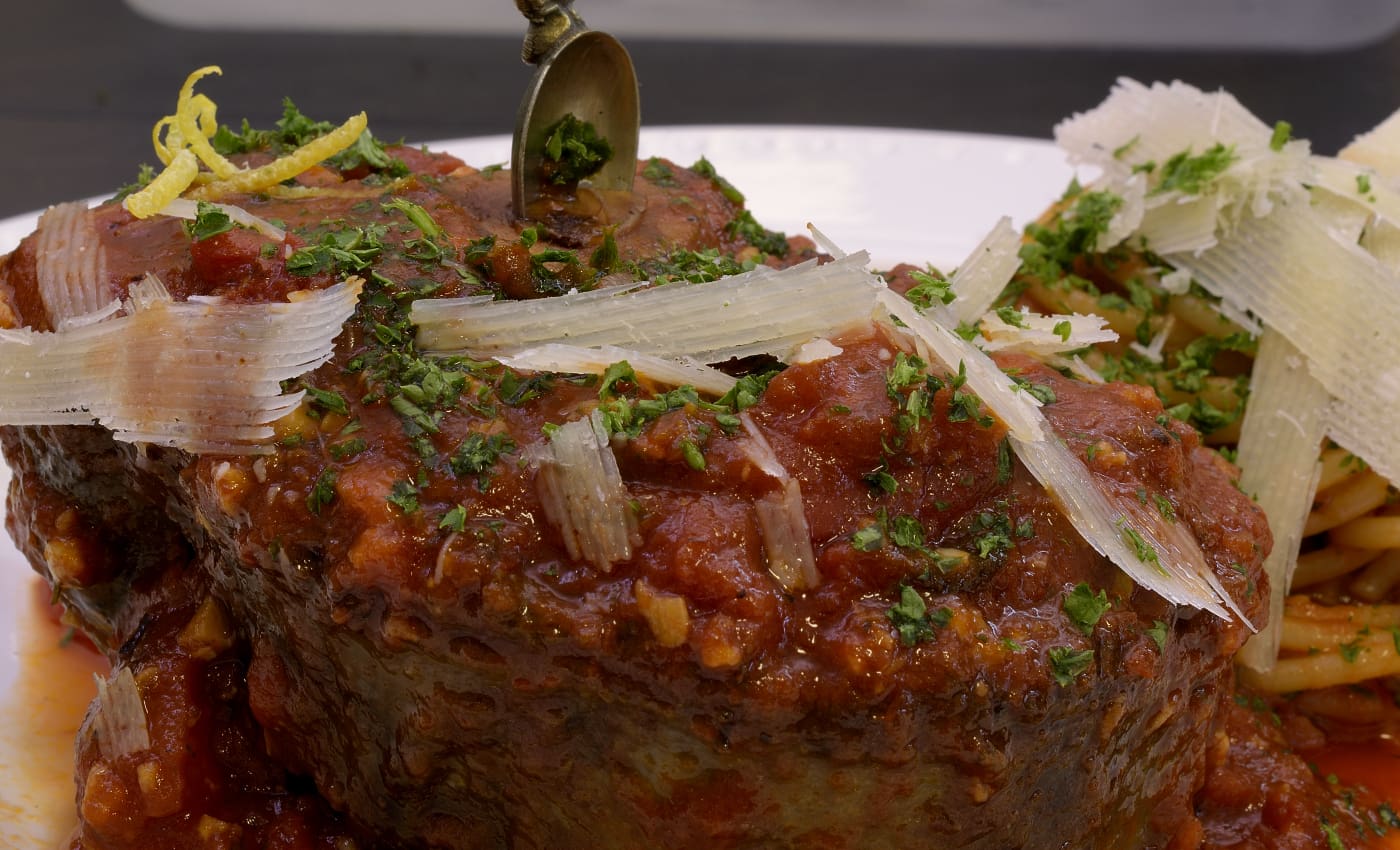
Garnish with shaved Reggiano Parmesan and chopped parsley.
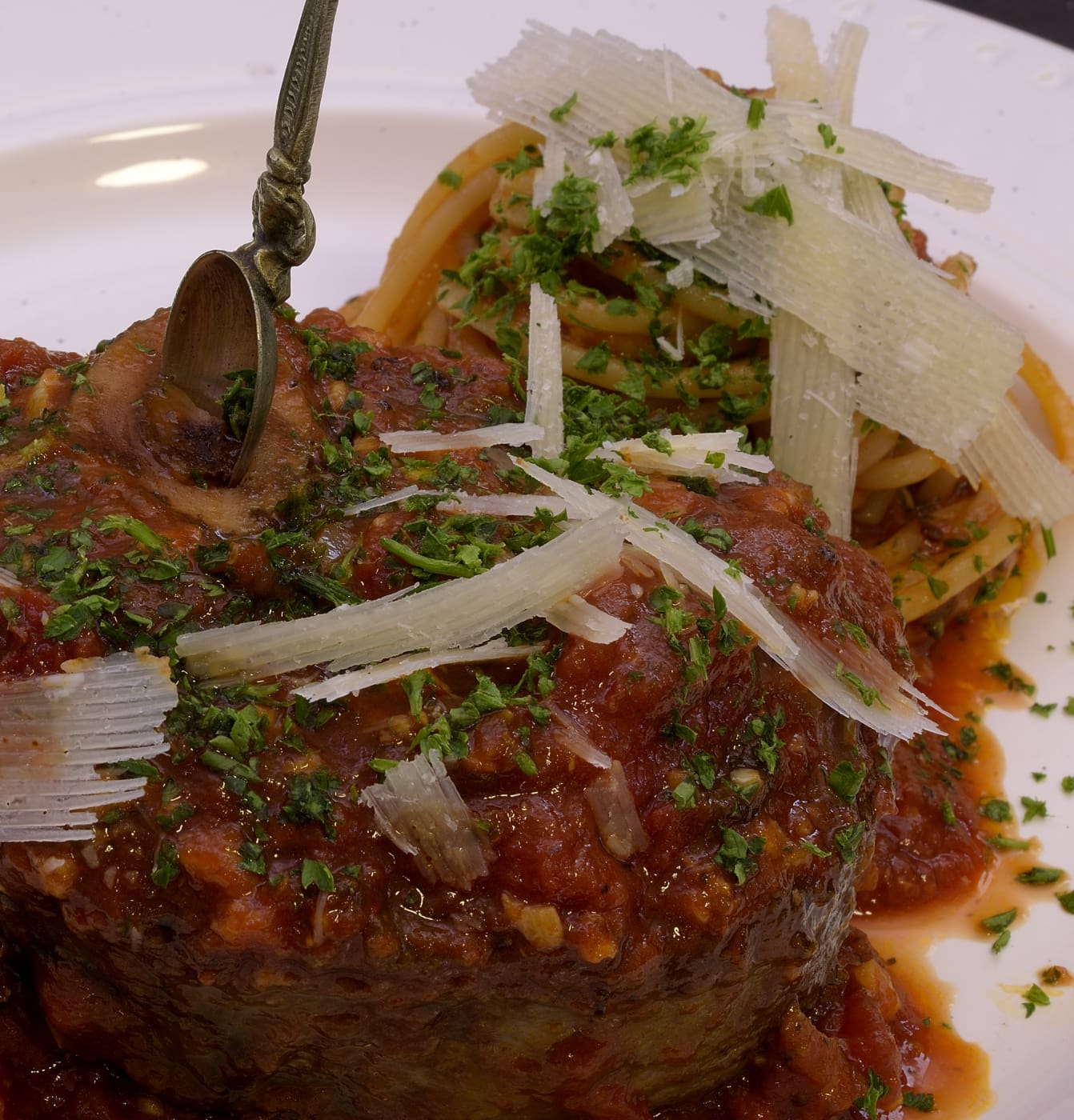
Optional Presentation
Some people feel a little timid about tackling the intact shank without the embarrassing bib that they provide when you order Maine Lobster in a restaurant.
Out of consideration for those people, and my wife, I occasionally dissect the finished osso buco to make it more knife and fork friendly. The marrow can usually be removed in one piece with the implementation of a chop stick or thick brochette.

Norm
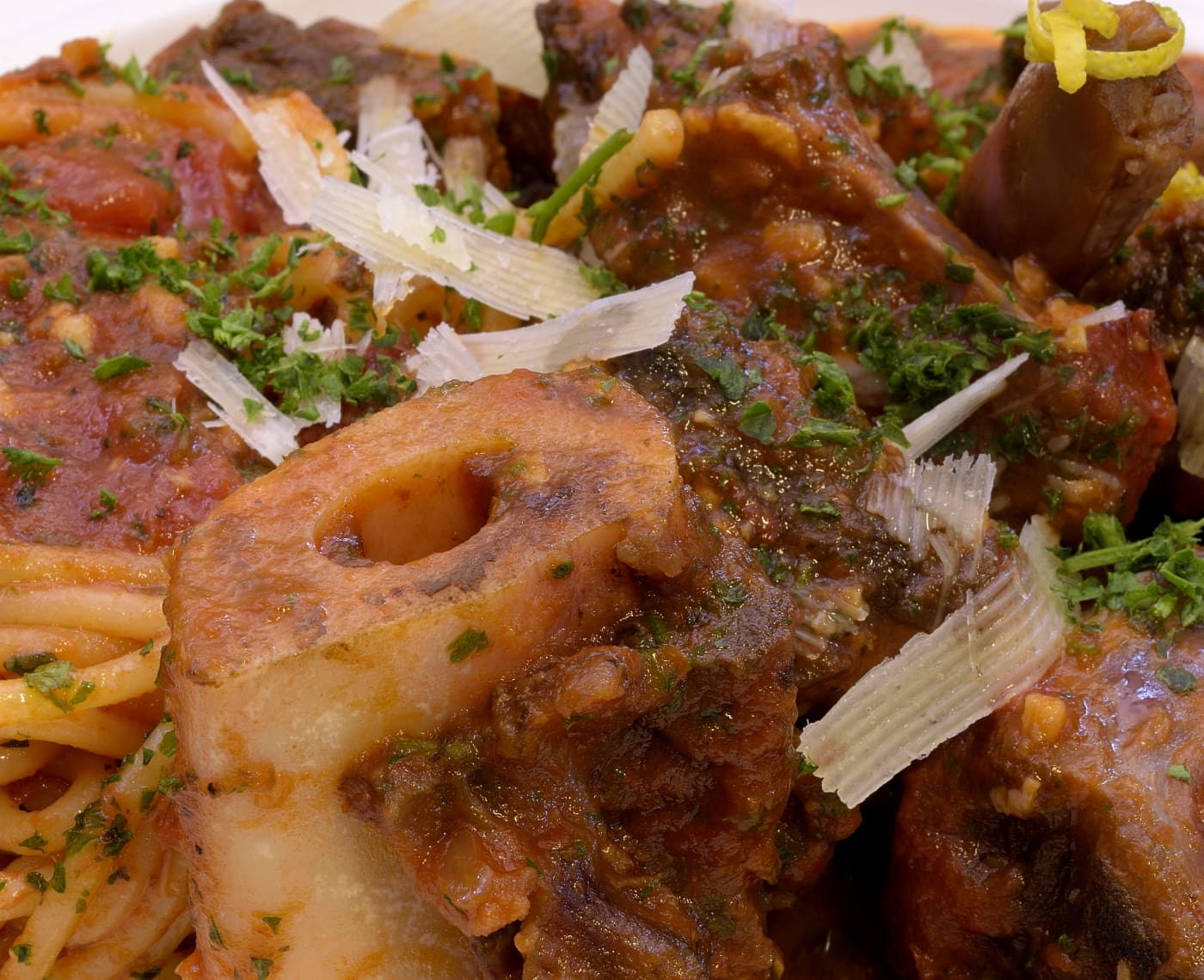
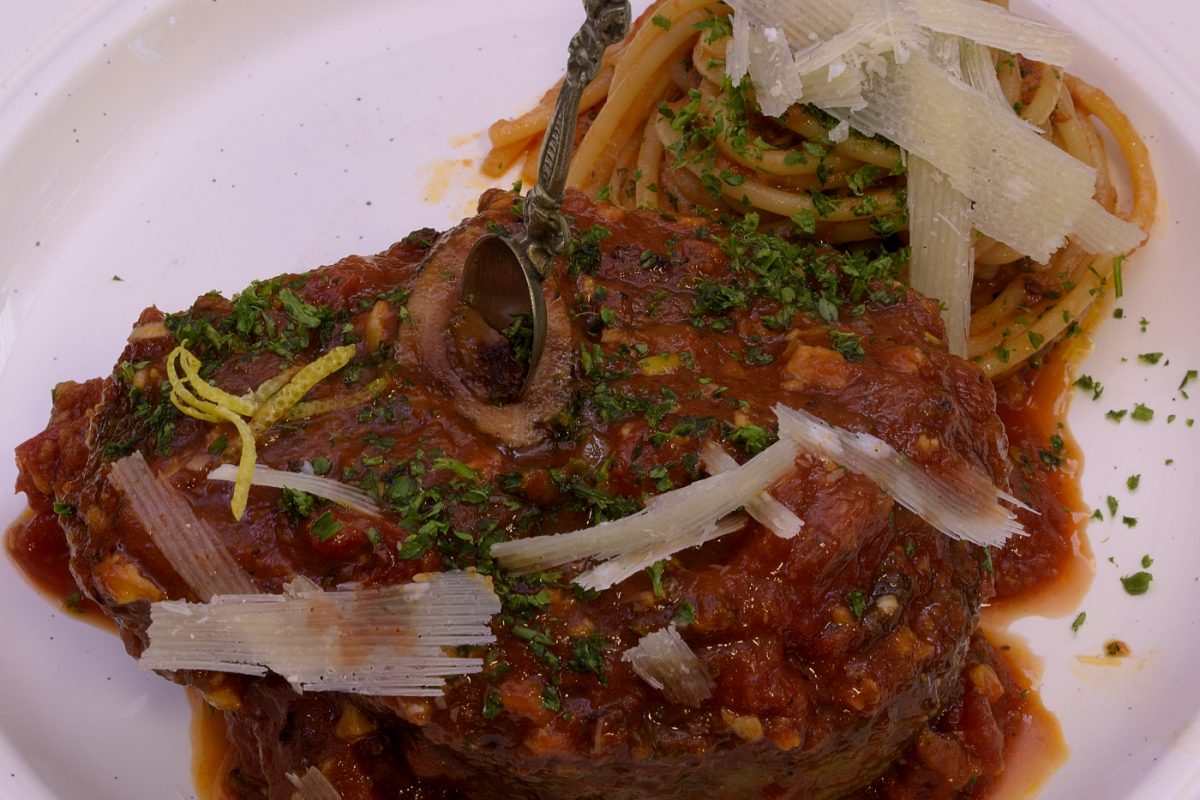
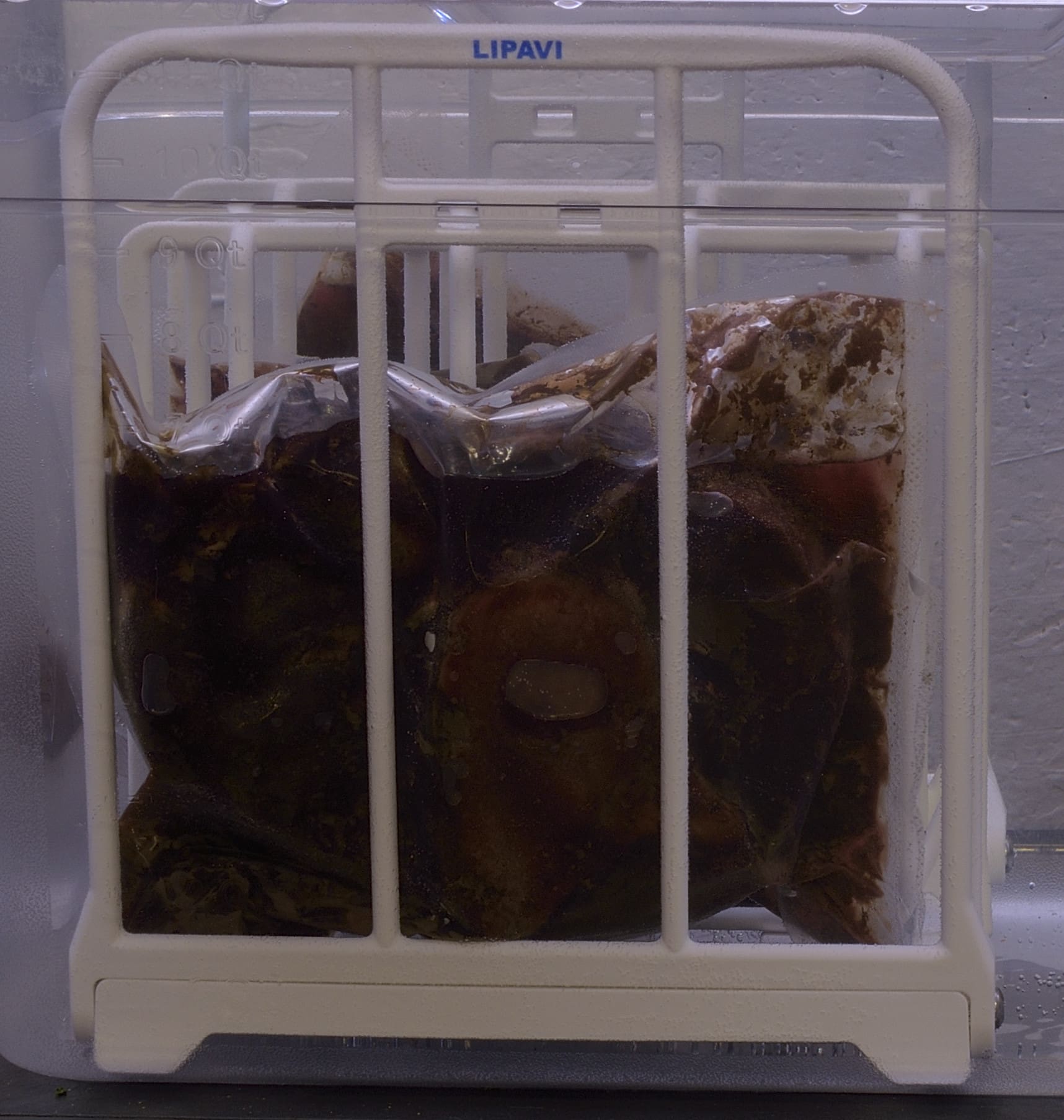
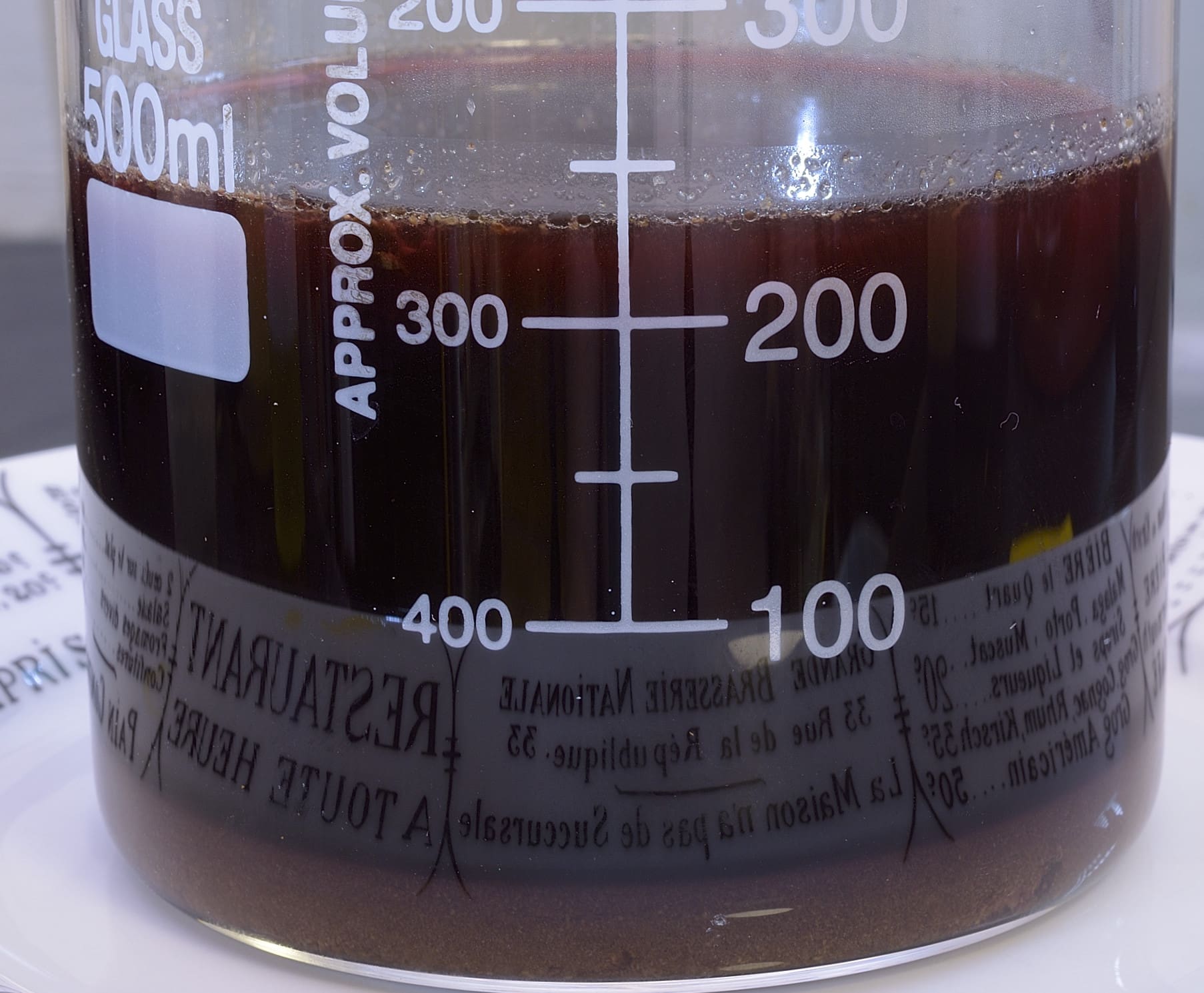
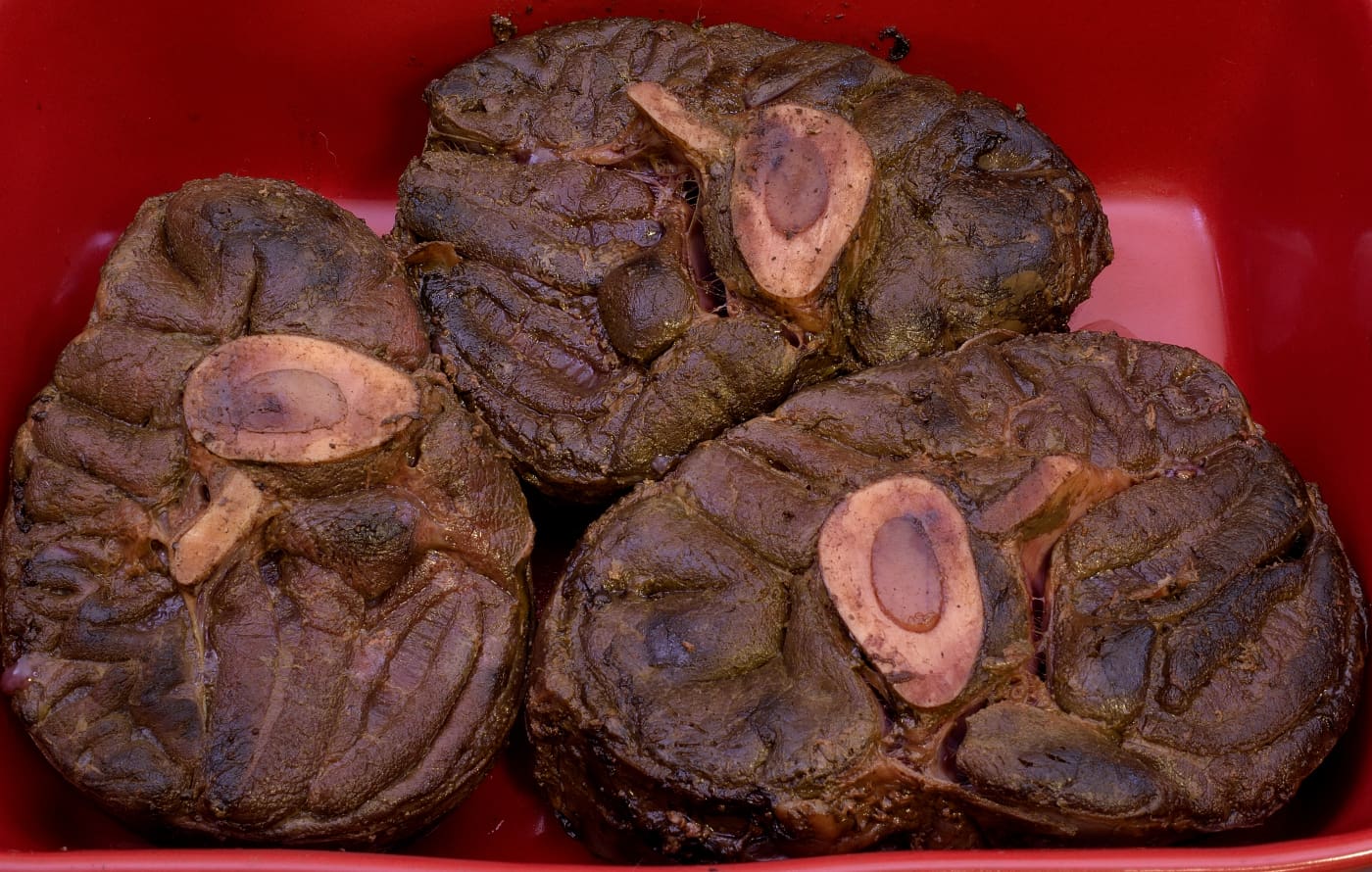
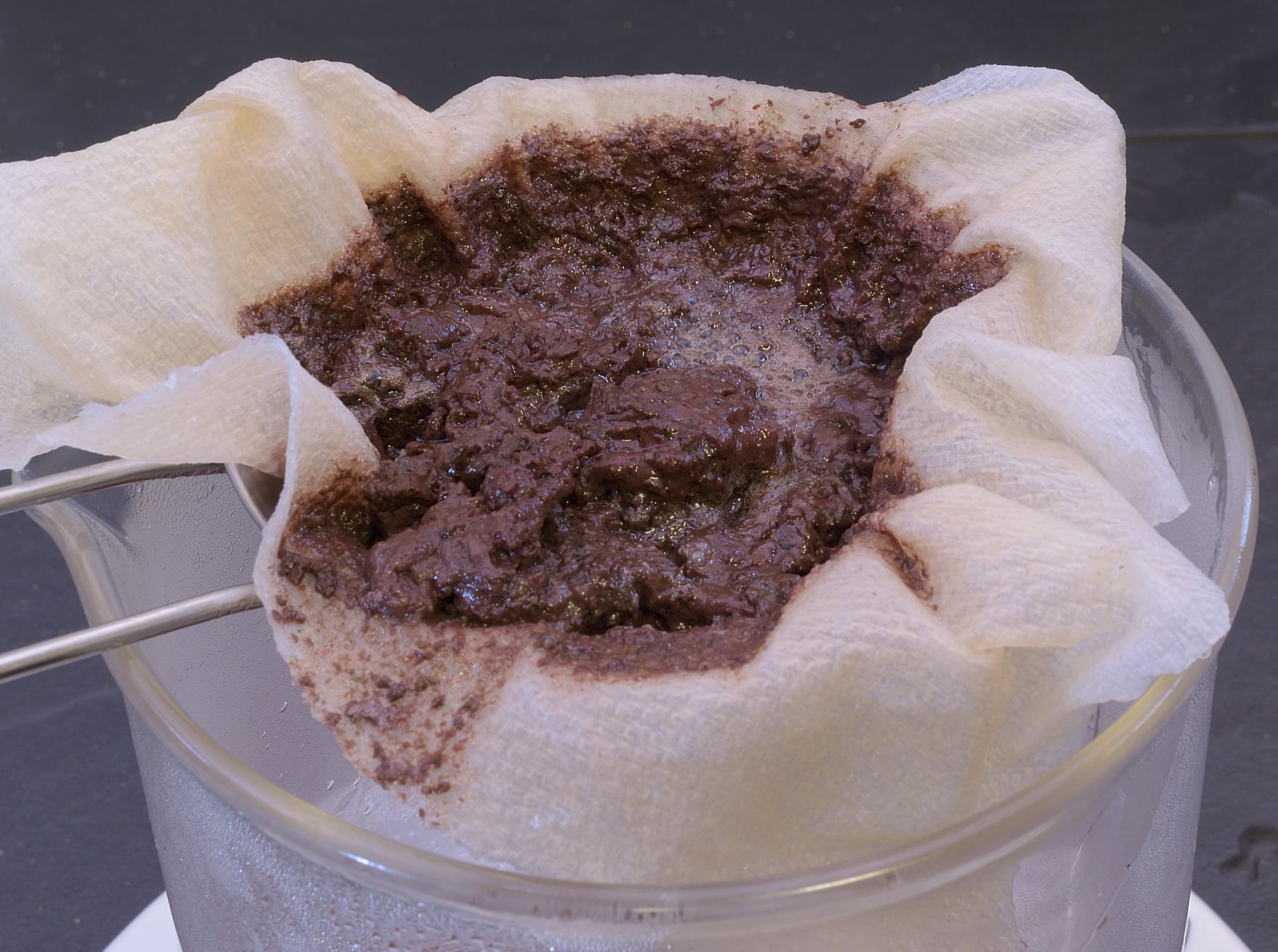
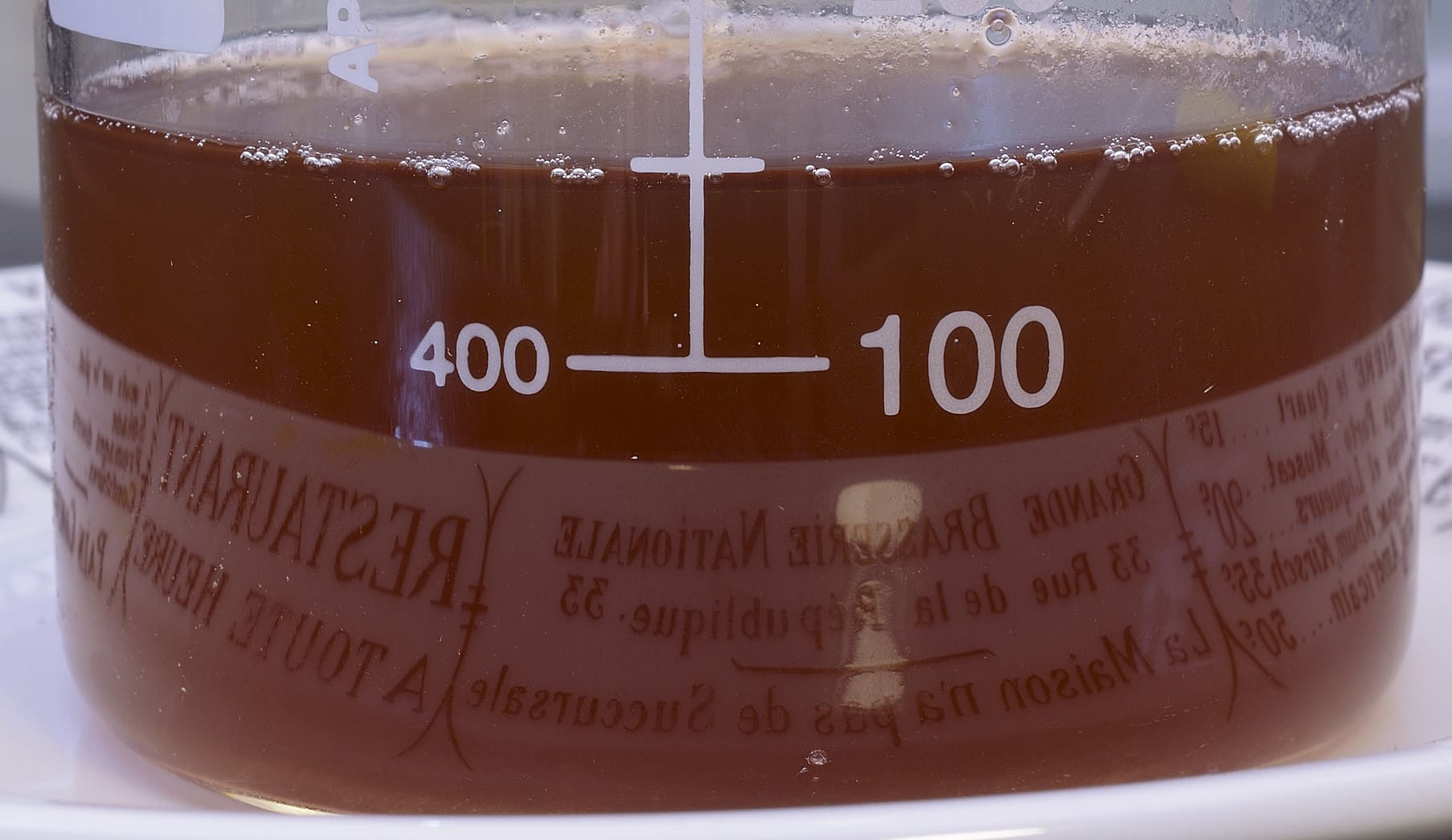
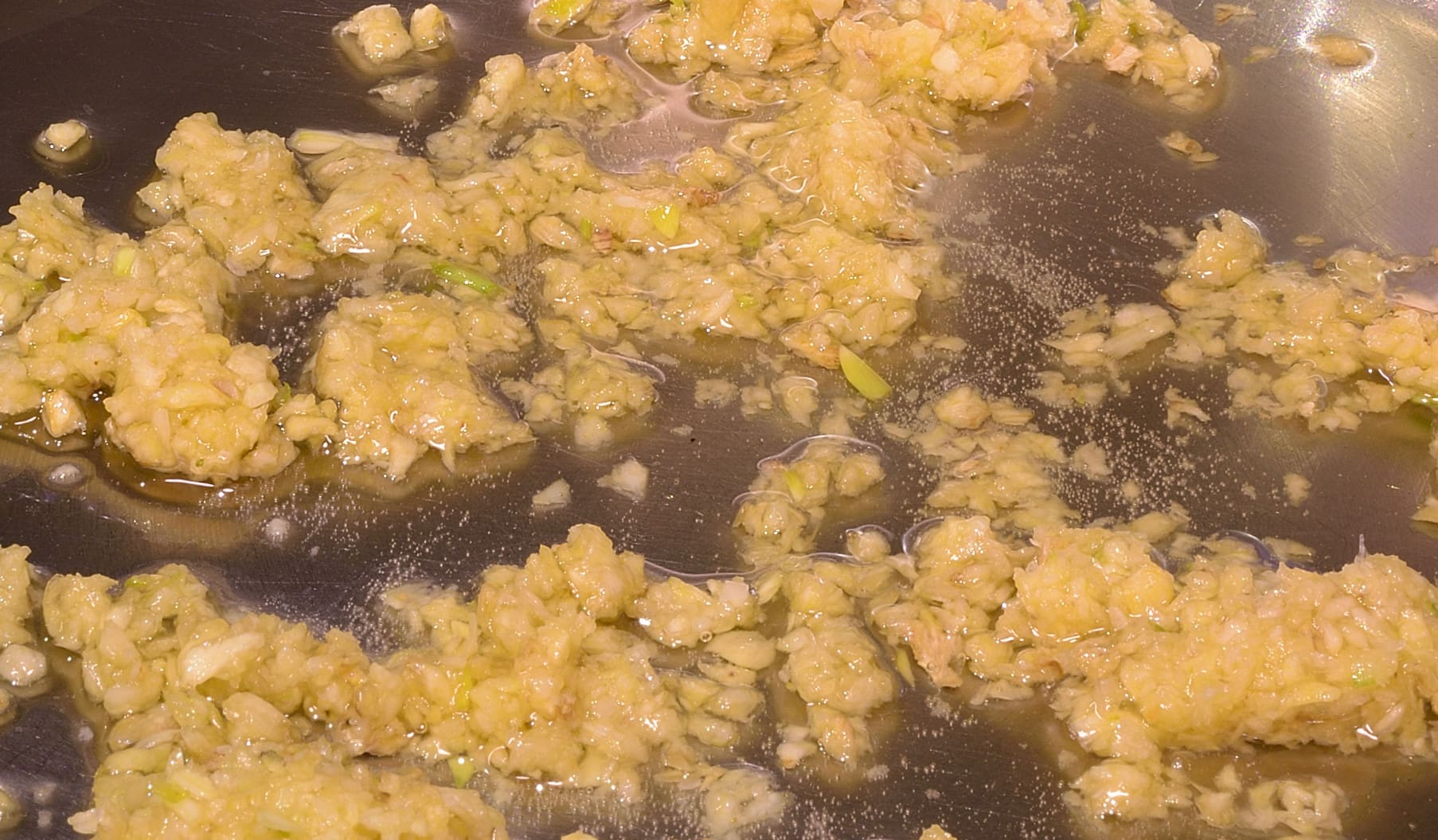

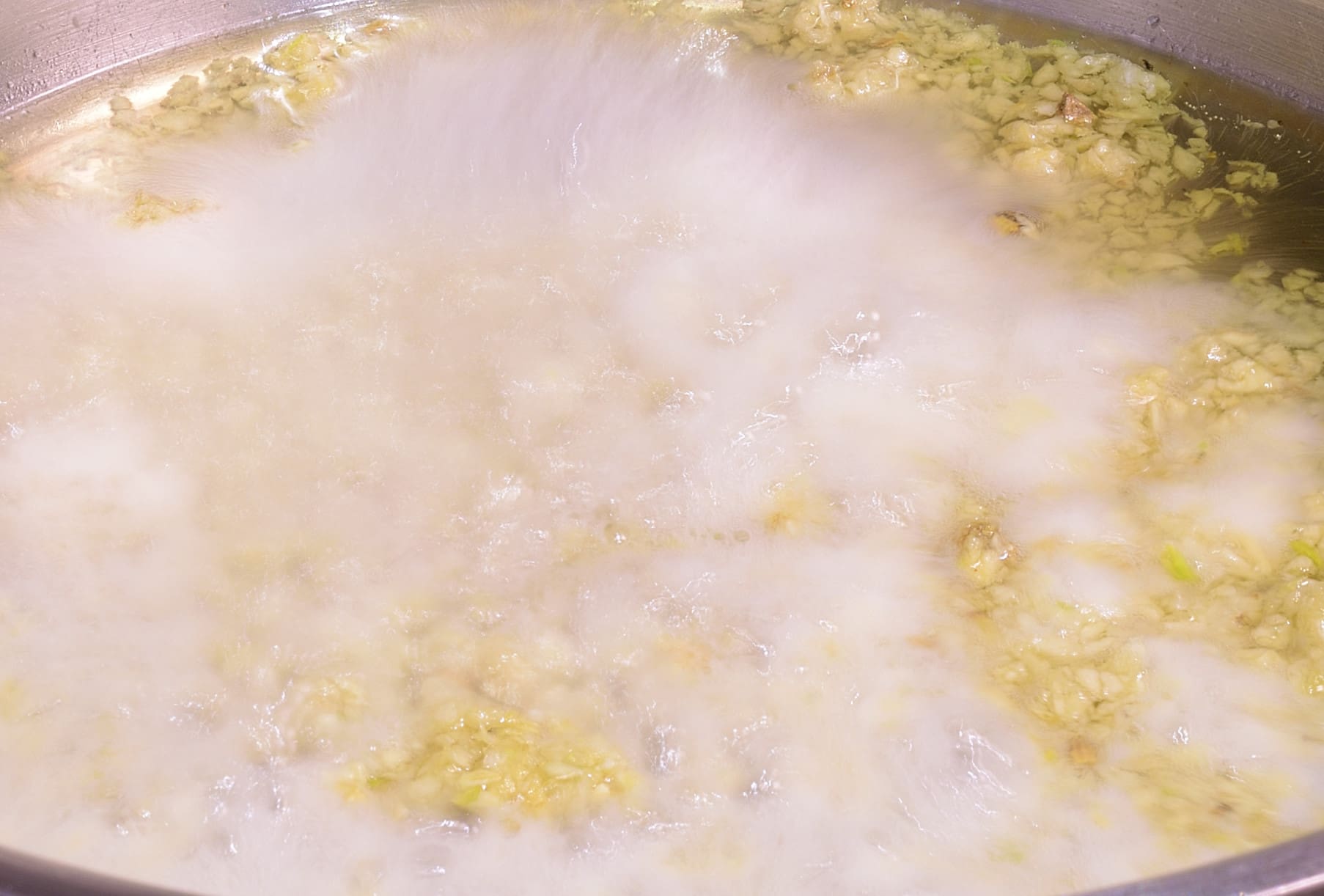
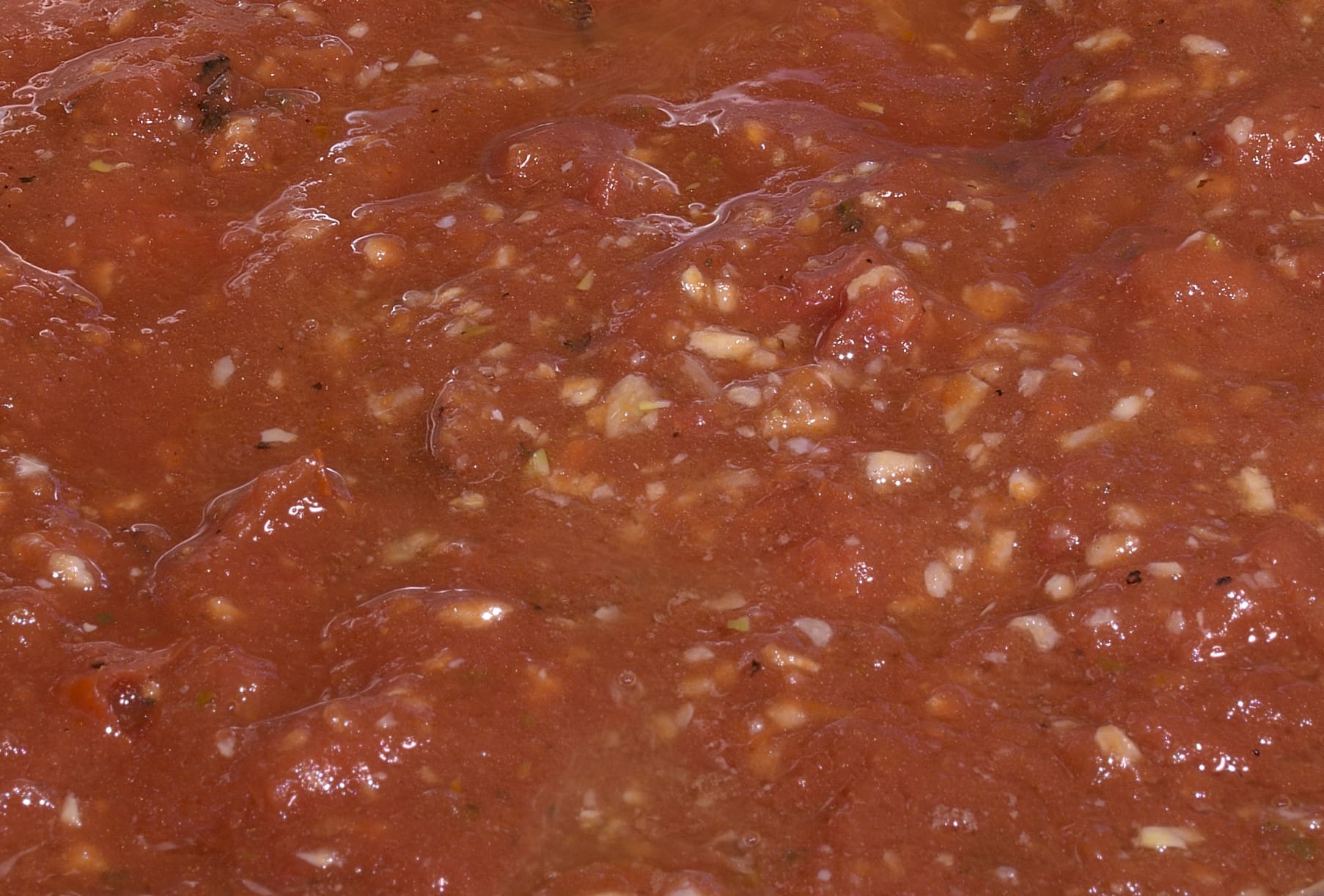
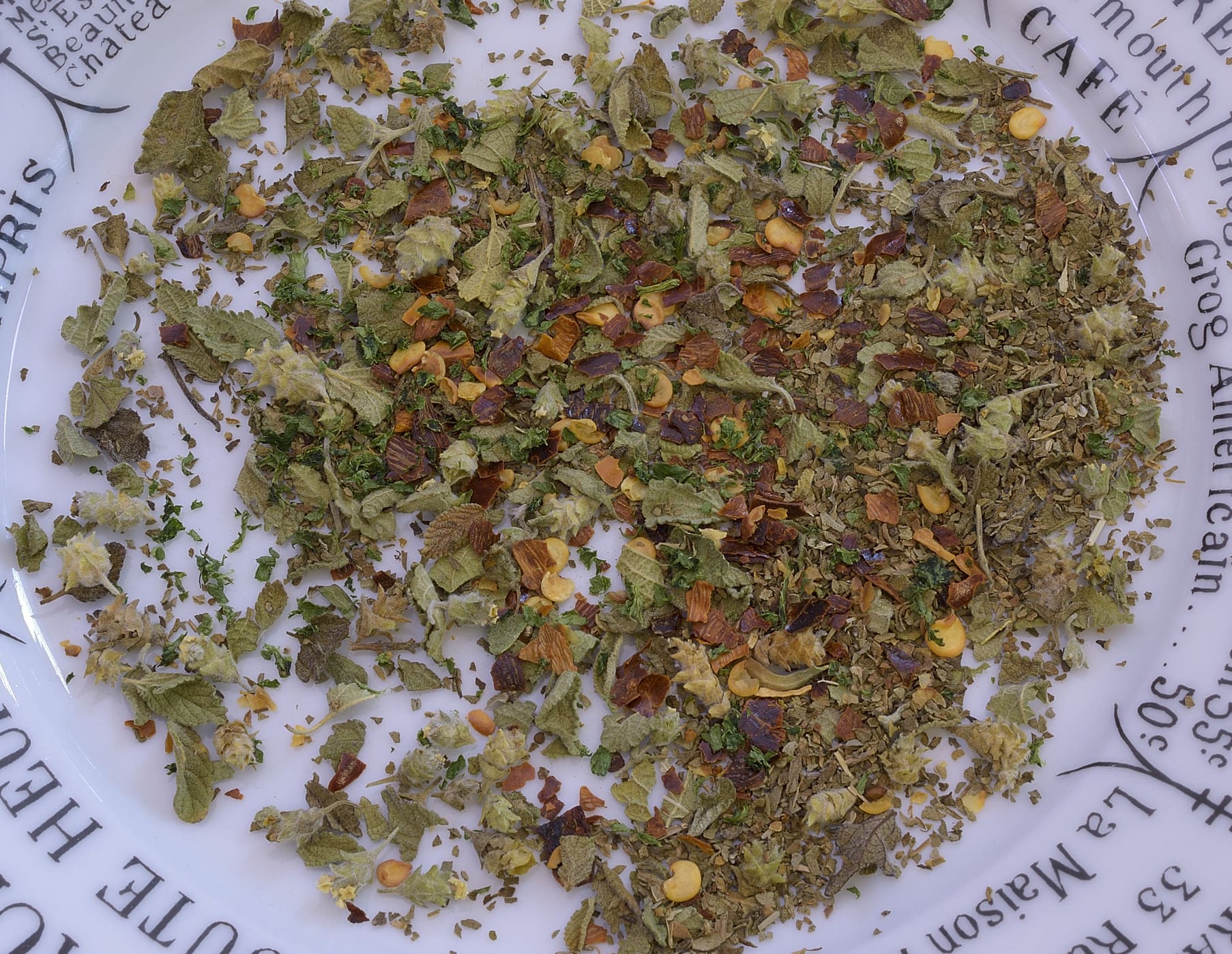
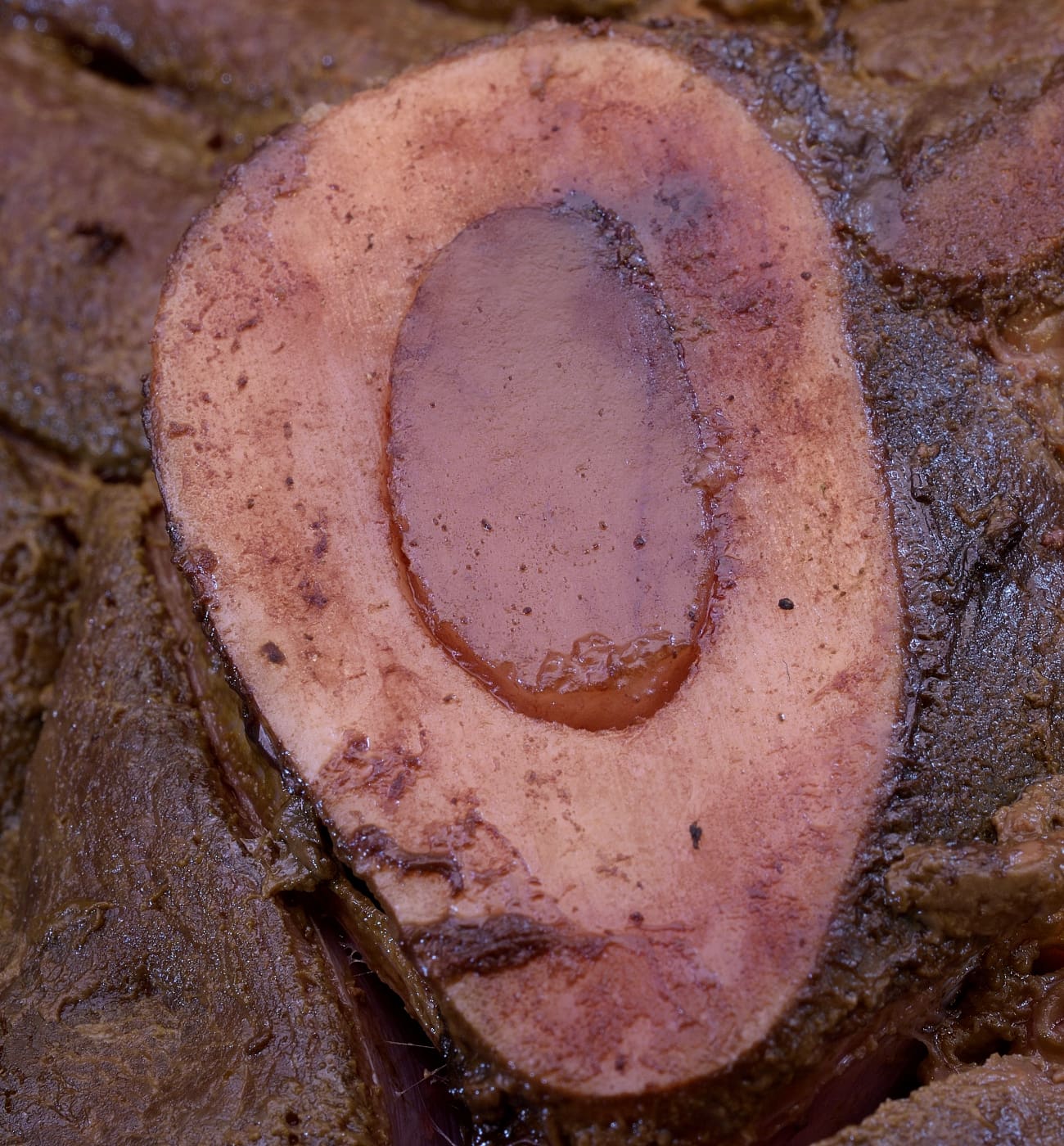
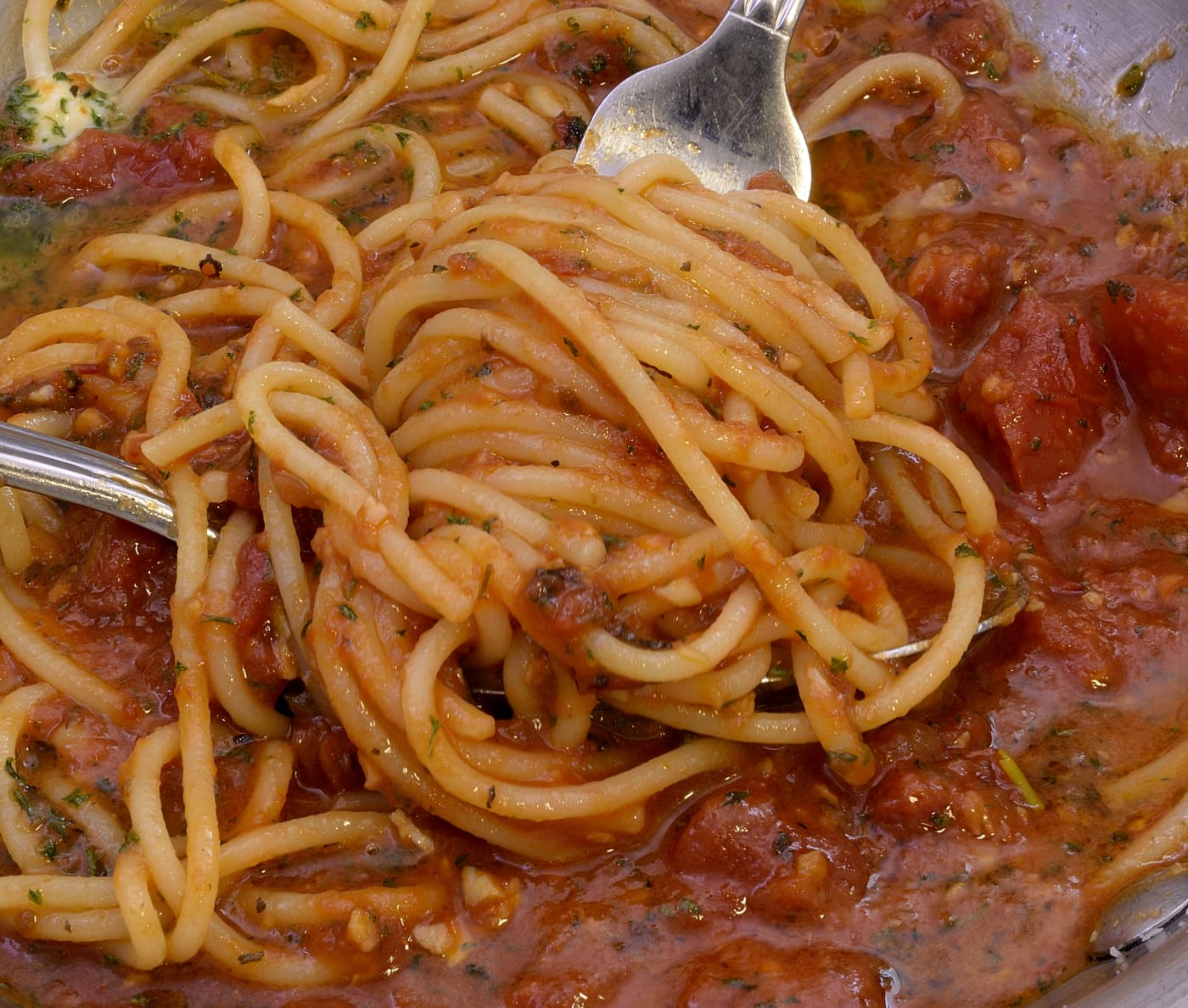
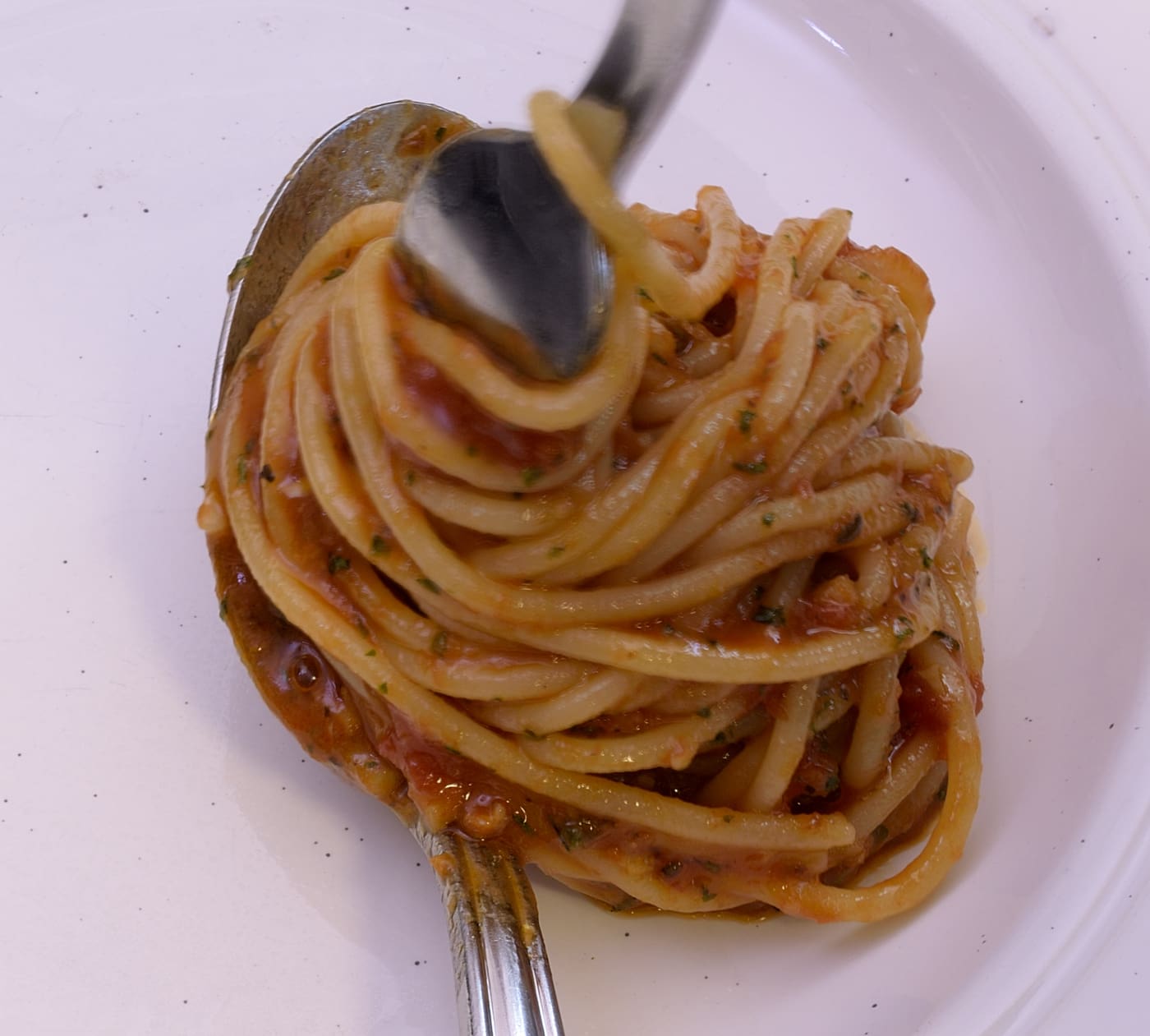
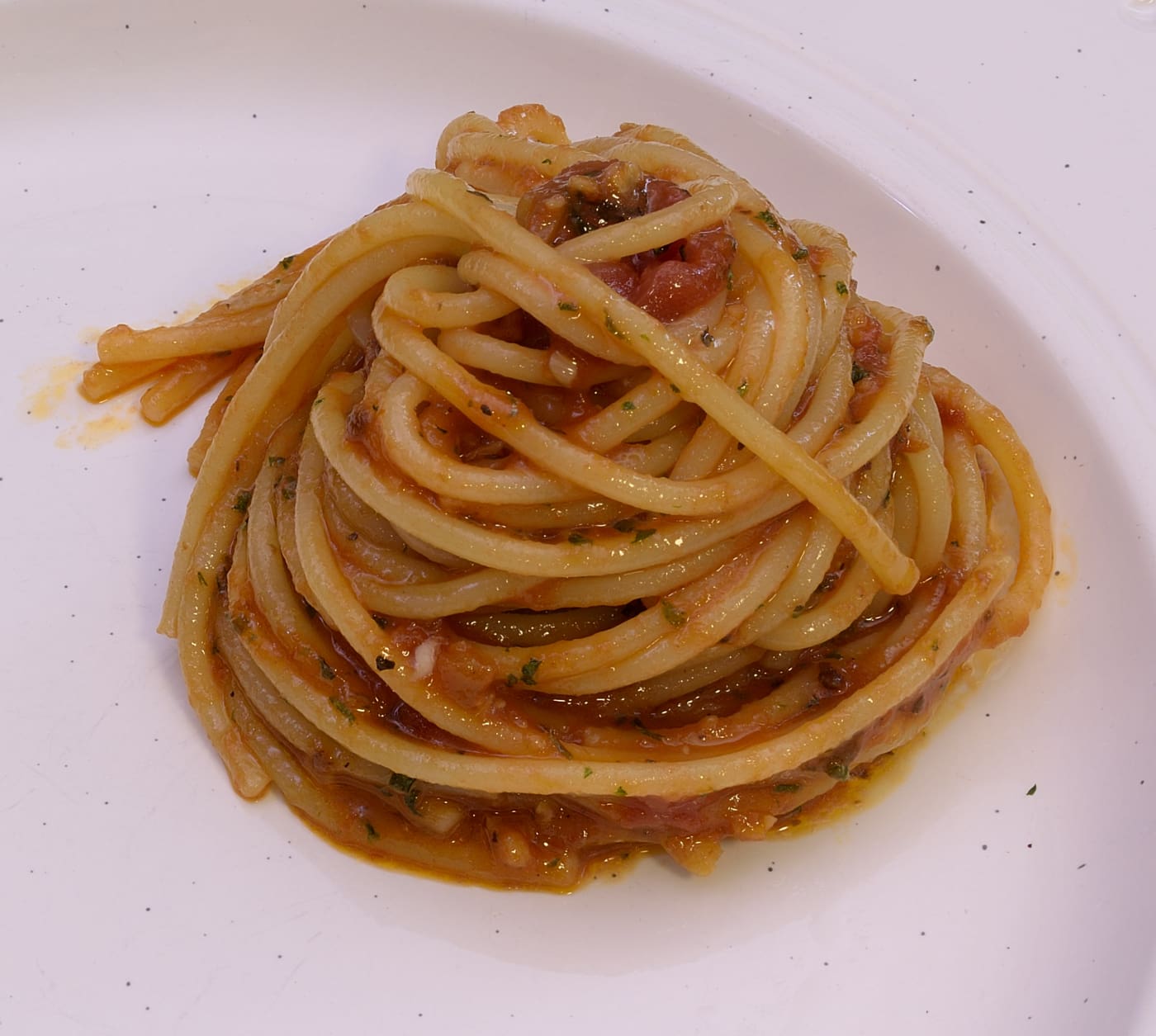
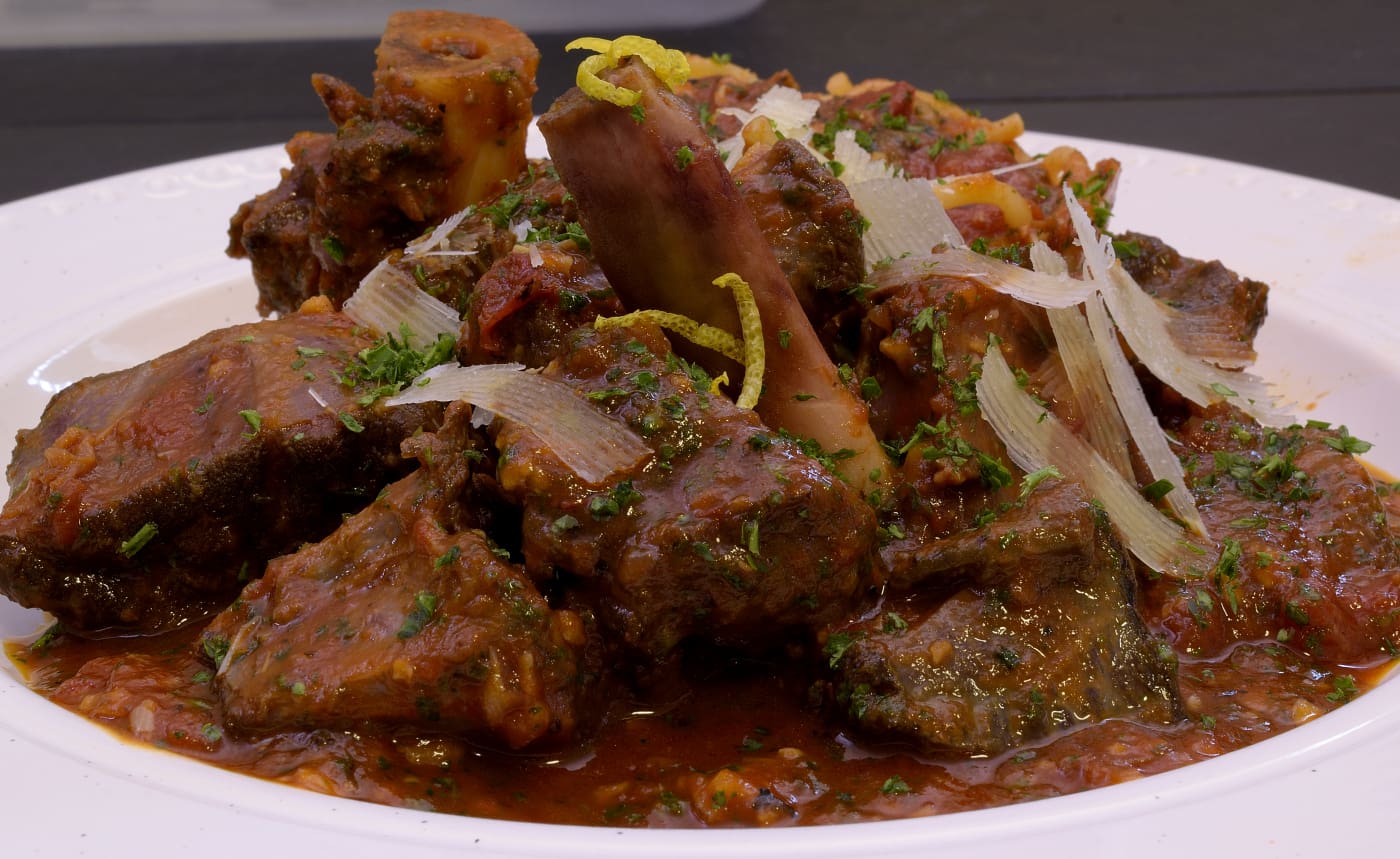
Why visitors still make use of to read news papers when in this technological globe all is existing on net?
Feel free to visit my web site vpn coupon 2024
Hmm it seems like your blog ate my first comment (it was extremely long) so I guess I’ll just sum it up what I submitted and say, I’m thoroughly enjoying your
blog. I too am an aspiring blog writer but I’m still
new to everything. Do you have any tips and hints for rookie blog writers?
I’d certainly appreciate it.
Feel free to surf to my site … vpn special coupon
Pretty part of content. I just stumbled upon your blog and
in accession capital to assert that I get in fact loved account your weblog posts.
Anyway I will be subscribing to your feeds
or even I success you get right of entry to consistently rapidly.
My web site vpn code 2024
My spouse and I stumbled over here from a different
page and thought I should check things out. I like what I see so i am just following you.
Look forward to going over your web page again.
Have a look at my blog post – vpn special coupon code 2024
Depraved french canadian, click for more to connect bombshell, here to please you
you’re truly a excellent webmaster. The site loading velocity
is amazing. It kind of feels that you are doing
any unique trick. Also, The contents are masterpiece. you have
performed a fantastic job in this topic!
My website: facebook vs eharmony to find love online